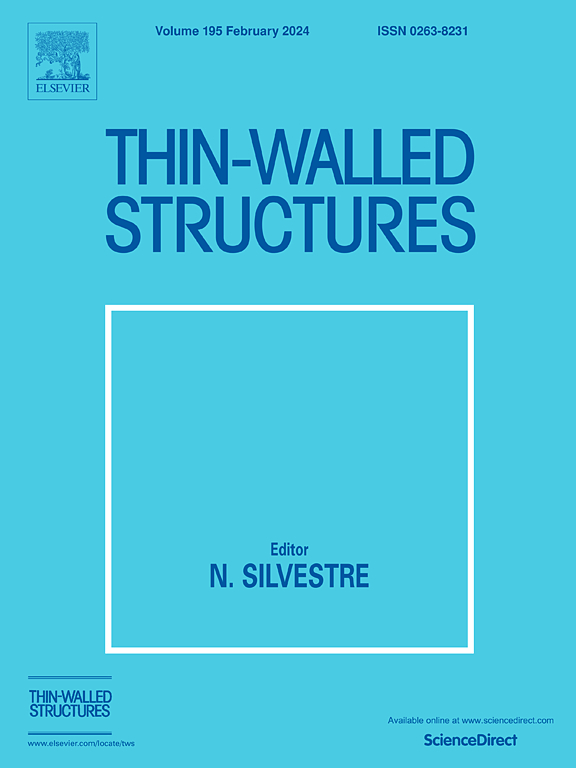Thin-walled box metabeam with graded 2DOF resonators for ultra-broadband complete flexural vibration suppression
IF 5.7
1区 工程技术
Q1 ENGINEERING, CIVIL
引用次数: 0
Abstract
Traditional vibration suppression structures often struggle to achieve a balance between high load-bearing capacity and effective low-frequency vibration suppression performance. This study proposes a metabeam constructed by attaching graded two-degree-of-freedom (2DOF) local resonators to a host thin-walled box beam with high load-bearing capacity. Unlike conventional metabeams that involve the external attachment of resonators, the 2DOF resonators considered in this study can be simply embedded within the box beam, thereby conserving space. By utilizing the spectral element method (SEM), which provides exact solutions in the spectral domain, we analytically demonstrate that the 2DOF resonator is helpful to achieve a wider vibration reduction band than the conventional single-degree-of-freedom (SDOF) resonator. Based on a comprehensive parametric analysis, a metabeam with graded 2DOF resonators is designed and fabricated. Experimental measurements confirm that the metabeam can achieve ultra-broadband low-frequency flexural vibration suppression under multi-directional excitation. Notably, the vibration attenuation bandwidth of the proposed metabeam with graded 2DOF resonators is approximately twice that of a conventional metabeam with periodic SDOF resonators.
求助全文
约1分钟内获得全文
求助全文
来源期刊

Thin-Walled Structures
工程技术-工程:土木
CiteScore
9.60
自引率
20.30%
发文量
801
审稿时长
66 days
期刊介绍:
Thin-walled structures comprises an important and growing proportion of engineering construction with areas of application becoming increasingly diverse, ranging from aircraft, bridges, ships and oil rigs to storage vessels, industrial buildings and warehouses.
Many factors, including cost and weight economy, new materials and processes and the growth of powerful methods of analysis have contributed to this growth, and led to the need for a journal which concentrates specifically on structures in which problems arise due to the thinness of the walls. This field includes cold– formed sections, plate and shell structures, reinforced plastics structures and aluminium structures, and is of importance in many branches of engineering.
The primary criterion for consideration of papers in Thin–Walled Structures is that they must be concerned with thin–walled structures or the basic problems inherent in thin–walled structures. Provided this criterion is satisfied no restriction is placed on the type of construction, material or field of application. Papers on theory, experiment, design, etc., are published and it is expected that many papers will contain aspects of all three.
 求助内容:
求助内容: 应助结果提醒方式:
应助结果提醒方式:


